5 Best Opening Systems for Club Players for Black

In our previous article, we provided the reader with a selection of opening systems for white effective at the club level. Following the same pattern, we have thought of a few openings club players can play with black. We have focused on systems that are solid and require less memorization than other purely theoretical lines. However, black doesn’t have the luxury of choice that white has and it is more difficult to rely only on strategic schemes and ideas. Here are our 5 Best Opening Systems for Club Players for Black.
1. The French Defense
The French defense begins with the moves 1.e4 e6. With this move, Black prepares to challenge white’s center with the move d5
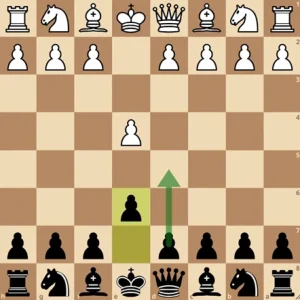
White has a number of second moves, but 2.d4 is by far the most popular. Other options by White will usually reach the same positions as one of the lines shown below.
Why we recommend the French Defense
The French defense is also a very direct opening which means that it is easy for black to obtain the exact positions that he has prepared. From the very beginning black challenges the white center and has a large range of options available to each of white’s three main responses (3.e5, 3.Nc3, 3.Nd2).
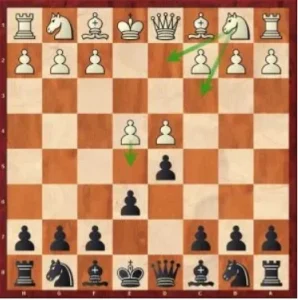
We will also discuss the move 3.exd5 later.
While the French defense is typically very solid, black also has many aggressive options. It is no wonder that fighting players like Viktor Kortchnoj and Arthur Yusupov employed it regularly in their careers. Let’s have a look at the main variations, with our recommendations, as well as some famous games.
3.e5 The French Defense Advance Variation
After our starting moves 1.e4 e6 2.d4 d5, perhaps the most common responses at club level is for White to move their pawn forward with 3.e5:
This variation, known as the advance variation, is what most French defense players love to see on the board. White’s center initially looks very strong, but they can quickly find themselves in trouble.
We will now begin to pressure the base of White’s pawn chain with the move 3..c5
White’s e5 pawn is very far extended and if we are able to remove a pawn from d4 then we may be able to win it. For this reason, White will almost always play the move 4.c3 protecting d4 and preparing to recapture on d4 with a pawn
The most common move for Black here is to develop our queenside knight to the c6 square, adding further pressure to White’s d4 pawn. However, we would recommend club players to play the second most popular move 4..Qb6
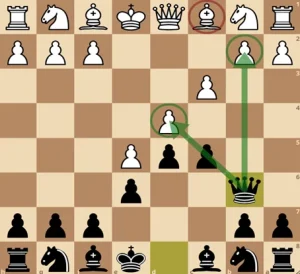
This move not only pressures d4, but also b2. By attacking b2 we prevent White’s bishop developing to e3, where it helps defend White’s fragile center.
In the Lichess player database, we can see that the fifth most popular move, played in over 82,000 games, is this move with 5.Be3 immediately losing the b2 pawn! You may also notice in the below screenshot that Black has an excellent score in all variations.
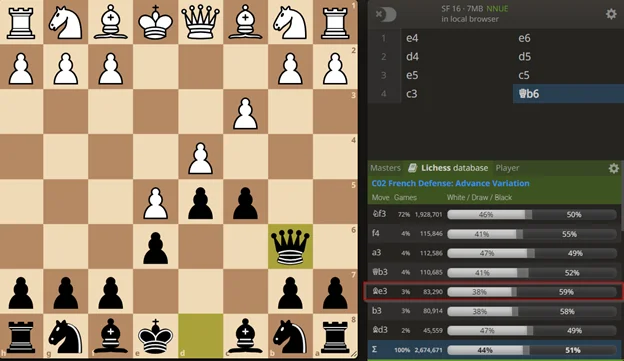
White should of course not blunder a pawn. Instead, it is must more logical for them to play a move such as 5.Nf3. This develops a piece and adds an additional defender to both d4 and e5. From here, we will continue to add more pressure to White’s center by developing with 5..Nc6
White now has a range of options, but we will just quickly look at the mainline with 6.a3. With this odd looking move, White prepares to play b4 and place their bishop on b2:

This move 6.a3 is not easy to find for White! We will continue to try to attack White’s center by first capturing on d4 and then maneuvering a knight to f5, either with Ne7-Nf5 or Nh6-Nf5.
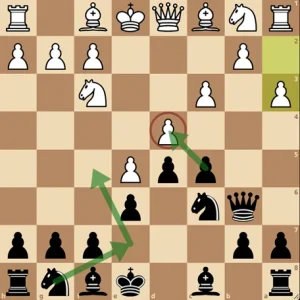
Following these plans, the game will most often continue like this:
>
Both sides still have all of their pieces on the board and this leads to a complex struggle with many variations. If you want to learn more, scroll to the bottom of this section for a discount on one of our French defense courses!
Have a look at the below advance French game between two legends, Alexei Shirov and Hikaru Nakamura to see how aggressive and tactical this variation can get.
3.Nc3 and 3.Nd2 The French Defense Rubinstein Variation
As we saw in the last section, if White advances their pawn too early it could potentially become weak. Therefore, many players decide to simply protect their pawn on the third move with 3.Nc3
In this position, Black has three main options.
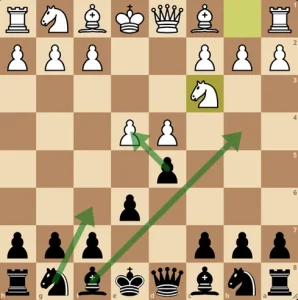
3..Bb4 leads to one of the sharpest and most aggressive variations in chess, the Winawer variation. This variation requires a lot of careful study. Since this article focuses on less theory intensive variations, we will not cover it here. However, if you are a player who enjoys sharp attacking chess, we have many courses on this site which cover the Winawer variation extensively! Look at the bottom of this section for a link to some resources.
3..Nf6 adds extra pressure to the White’s center pawn. If the pawn advances with 4.e5 we will have reached positions similar to those we saw in the previous chapter. However, if White plays 4.Bg5 pinning our knight, the positions can get quite complex.
Our third option, which we will focus on here is the simple 3..dxe4, known as the Rubinstein variation. We have chosen the Rubinstein for this article as it is easy to play and can also be played against 3.Nd2, which is White’s third most popular move. This makes it ideal for club players with limited time to study!
In the mainlines of 3.Nc3 and 3.Nd2, Black usually takes two very different approaches. However, we will play 3..dxe4 and after 4.Nxe4 both 3.Nc3 and 3.Nd2 reach the same position, saving us an immense amount of work!!
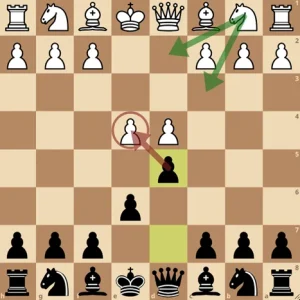
From the below two games we can see that both move orders will reach the same position:
We can consider this position after move 4 as the starting point of our Rubinstein repertoire:
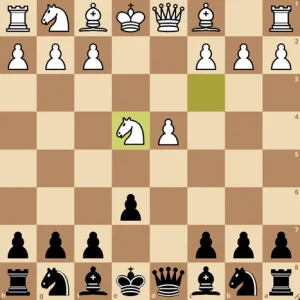
This is the starting position of the Rubinstein. We have traded off one of White’s strong central pawns. From here Black has a very thematic plan to develop the pieces:
– First, we will put our Knight to d7 which serves multiple purposes. Our other knight is coming to f6 and if White plays Nxf6, we can recapture with our knight on d7. Additionally, it supports the important ..c5 break:

– Next, we typically continue with Ngf6 challenging White’s powerful knight in the center, which we are happy to trade off. For example:
– Third, the drawback of the French defense is that the c8 bishop can not come to f5 or g4. Therefore, we will likely play b6 and Bb7 to place our bishop on an active square. b6 will also add additional support to the c5 break:
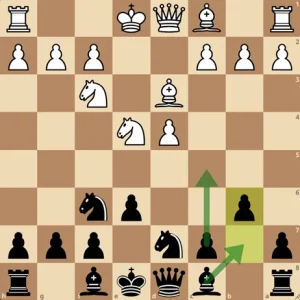
Depending on how White plays, our next few moves can be in a mix of orders, but our plan remains similar: We will develop our f8 bishop usually to e7, castle, and play the ..c5 break in some order.
We will see a couple of games below where black effectively puts this plan into action in different orders. This should give you a good feel for the positions. They are easy to play and understand, and very difficult to break.
Here is World Champion Vishwanathan Anand losing to the Rubinstein variation:
and here it is being used by the greatest attacking player of all time, Mikhail Tal!
3.exd5 The French Defense Exchange Variation
On the third move, especially at the club level, a very common reaction by white is to capture our pawn. When this happens we will recapture with our e pawn.
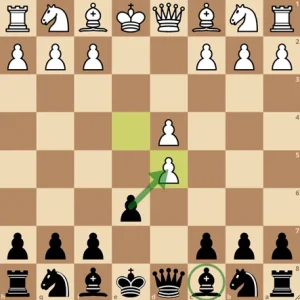
The one downside to the French defense is that our c8 bishop is often trapped due to being blocked by the e6 pawn. However, after the exchange of pawns as seen above it is free to develop! Because of this we already have a very easy game, and White has no advantage. Our opening has already been a success on move 3!
Many people complain that the exchange variation is very boring due to its symmetrical nature, and this is true in the mainline. However! We are going to recommend an aggressive way of playing pioneered by the great attacking World Champion Alexander Alekhine where we castle queenside and go on the attack!!
See the two games below and realize that the Exchange variation is not as boring as you thought.
Want to add French Defense to your Repertoire?
GM Marian Petrov has just completed his 10-hour guide to the French Defense. It contains essential knowledge for playing both sides of this massively popular opening.
Everything in this course is geared towards getting you an advantageous middlegame, no matter what your opponent plays.
2. The Nimzo-Indian
Above all, playing the Nimzo-Indian is playing pure chess. It is an opening that has been part of the repertoire of every champion and one that has never gone out of fashion from a theoretical point of view. One of the characteristics of the Nimzo-Indian is the harmonious development that black obtains and the diversity of pawn structures that can arise in the middlegame.
A good start to creating a repertoire and selecting the lines you want to play with black is to look at the games of Michael Adams. In our opinion, he is one of the main exponents of this wonderful defense.
Why we recommend the Nimzo-Indian
While the Nimzo-Indian is quite theoretical with a lot of lines, it is also an extremely logical opening. As Black, we will fight for control of the e4 square. In the mainlines, most of our moves are based around this simple principle. If you know this idea, combined with a few other thematic concepts, you can employ the Nimzo-Indian as a very effective weapon at club level.
We can see how the first few moves by both sides fight for control of the e4 square. After 1.d4 we will reply with 1..Nf6, preventing White from increasing their control of the center with e4:
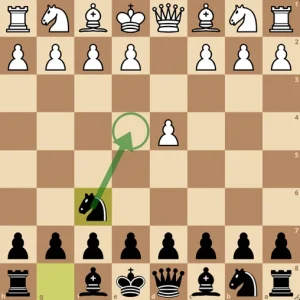
Now, a move by White such as 2.Nc3 may run into 2..d5 when we have a strong grip on the e4 square. White anticipates this and tries to dissuade us from playing ..d5 with the move 2.c4:
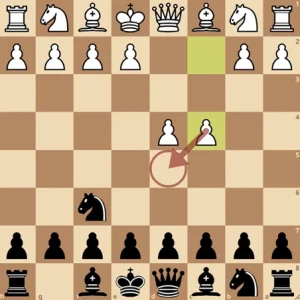
Black can now play the move 2..e6 which serves two purposes. First, it releases our bishop on f8, and it supports the move ..d5 if we do decide to play it in the future:

White’s most principled response here is to continue with 3.Nc3. This develops a piece and threatens to take over the center with e4:
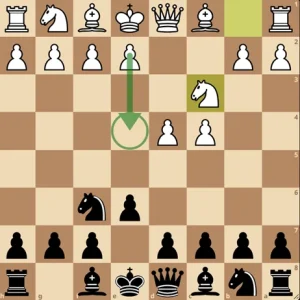
Here, we play the move 3…Bb4, preventing this central expansion with a pin on White’s knight. We are now officially in the Nimzo-Indian variation:
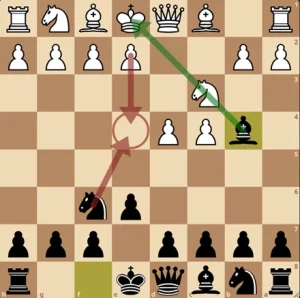
We can see above that White is now unable to play 4.e4 as we could safely capture it with our knight due to the pin.
White now has tried a huge variet of moves here. However, our plan can broadly be split into two steps:
1.Continue to control e4
2.Chip away at White’s center with moves such as ..c5 and ..d5
Controlling e4 in the Nimzo-Indian
Let’s start by considering the different options each side has to control e4 in the Nimzo-Indian:
White can immediately threaten to play e4 with moves such as f3 or Qc2:

Or, White could take a slower approach to controlling e4, such as developing the light squared bishop to d3 or g2:

Another option, which is often combined with the above ideas, is for White to try and eliminate our f6 knight using their dark squared bishop:

Black also has numerous ways to increase our control over the e4 square. These include placing a bishop on b7:
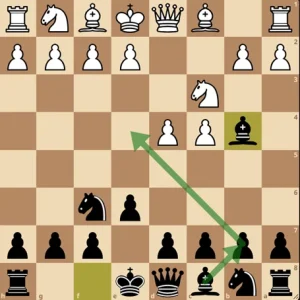
Playing …d5:

Or, playing the maneuver …Ne4 and …f5

Which method of control we choose depends on what our opponent decides to play. Once we find an opportunity, we want to begin to dismantle White’s center with the move …c5
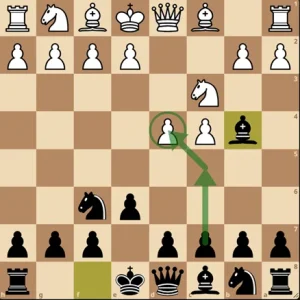
Due to the many different variations and move orders White may try, we can not cover them extensively here. However, if you keep the above points in mind while looking at the below games, the opening will seem very logical and easy to follow:
If the Nimzo Indian seems like something you want to learn more in-depth you may want to check out one of our courses such as:
https://thechessworld.com/store/product/win-with-nimzo-indian-defense-by-gm-miloje-ratkovic/
3. The Bogo-Indian
After reading the section on the Nimzo-Indian you may be wondering what happens if they don’t play 3.Nc3? Well, we have a number of options, but one of the most natural companions to the Nimzo-Indian is the Bogo-Indian. After the moves 1.d4 Nf6 2.c4 e6 (as in the Nimzo-Indian) if White plays a different move such as 3.Nf3, we will still play 3…Bb4+

Why we recommend the Bogo-Indian
If White blocks the check by placing the knight on c3, we are back in our Nimzo-Indian repertoire! If White avoids this transposition by blocking with 4.Nbd2 or 4.Bd2, we still reach positions with similar themes to those in the last section. This would be the complement variation for the Nimzo-Indian repertoire. Our choice will depend, after all, on which knight white develops. Again, the Bogo-Indian offers a variety of plans; black can choose between complicated strategic games or aim for equality with calmer lines. Korchnoi was also a fan of this opening and used it with great success in his chess career.
After 3…Bb4, white’s main response is 4.Bd2, and here black can choose between many options, but probably the most interesting is 4…a5 a la Kortchnoj or 4…c5. These two moves lead to a complicated struggle. For the latter, we suggest you look at the games of Liviu-Dieter Nisipeanu.
Many of the themes remain the same as those discussed in the Nimzo-Indian section. We will control e4 for as long as possible while trying to dismantle White’s center with moves such as ..c5 and ..d5.
4. The Classical Dutch
Next, we again look at an opening that can be played against 1.d4, but also against any other move that is not 1.e4 or 1.g4! The Dutch Defense!
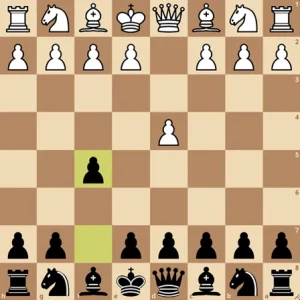
The basic setup we are aiming for as Black is shown below:
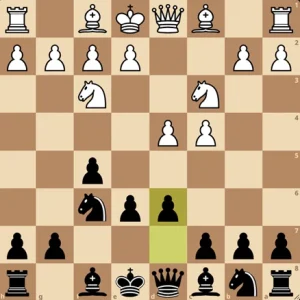
We use our pawn on f5 and knight on f6 to control the e4 square, and we set up a flexible small center, which we will often expand later. We recommend looking at the games of GM Simon Williams who is the leading expert on this variation.
Why we recommend the Dutch
The Dutch can be played against any opening moves by White other than 1.e4 or 1.g4. This allows us to save a lot of time in preparation. Additionally, it often leads to very exciting attacking games.
Bonus Tip: If you liked the French Defense from the first section, the Classical Dutch is a natural partner, as we can meet 1.d4 with 1..e6. If White plays 2.e4 then 2..d5 takes us back into the French. If White doesn’t play 2.e4, we can only then play 2..f5 reaching a Dutch while avoiding some of White’s most annoying variations!
There are several variations of the Dutch Defense, including the Classical, Stonewall, Leningrad, and Christmas Tree variation. We chose the Classical here, as it pairs well with the French described earlier, and has some of the easiest plans to follow.
The e3 variations
White has a number of ways to set up against the Dutch. We will focus on the main two general setups, those where White plays e3 and those with g3. The lines with g3 are considered the mainlines and are the most challenging. In fact, if White plays with e3 we are going to reach some positions which may feel reminiscent of the Nimzo-Indian shown earlier where Black plays ..f5.
If White chooses to continue with e3, we are going to go with a simple setup where we place a bishop on b7 to control e4, and we place our other bishop on e7.
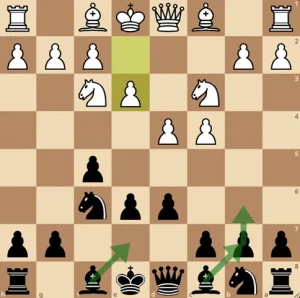
We will castle and usually place a knight on d7, from where we are prepared to break at the center with either ..c5 or ..e5. Typically in the Classical Dutch ..e5 will be the break we like to aim for:
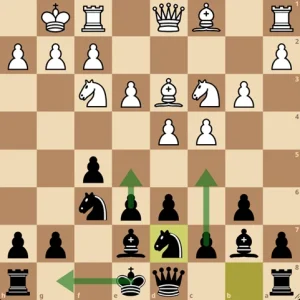
If you have looked at the games in the Nimzo-Indian section, you should have an idea.
The g3 mainlines
Far more challenging are the lines where White fianchettos their kingside bishop to g2, making it very difficult for us to safely play the moves ..b6 and ..Bb7 to control e4. However, in these lines, we will often get to launch an attack against our opponent’s king!
We can reach our starting g3 mainline by a variety of move orders, but the basic starting position will look something like this:
Black has a number of options here, but we recommend you try the classic idea of 7…Qe8!
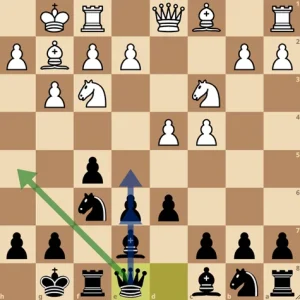
The immediate point of this move shown above is to swing the queen over to h5 from where it will help us launch an attack on the king. The second idea is that, if we move our e7 bishop, the queen may be able to help achieve the ..e5 break.
Below are some example games of Simon Williams to see the types of attacks you may get on the board.
5. The Accelerated Dragon
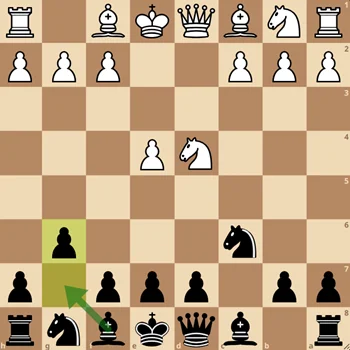
This opening choice offers black a link between solid and aggressive play. It is easy to learn and contains quite a few tricks that at this level can prove useful in tournament practice. After 4…g6 white can choose between 5.c4, Maroczy type, which will lead to a positional play, and 5.Nc3, which can lead to sharper play.
Want to know more about this opening? Look at Accelerated Dragon: 10 Reasons to Play It.
The main expert on this variation is nowadays the Venezuelan Grandmaster Eduardo Iturrizaga. So, you can start by looking at his games in this opening. The Accelerated Dragon is the most direct way of playing the Dragon. Black reserves the possibility of playing …d5 in only one move. With this, he prevents white from achieving the most dangerous set-up, the Yugoslav Attack (after Be3, f3, and Qd2).
The ideas presented above can help you build a solid and durable repertoire that can be improved over time. Once you reach a certain level, you can add more complicated and aggressive lines that lead to a different type of play. We hope this will serve you as a starting point for your future repertoire. Also, we hope you will find openings that better suit your style.
Good luck!




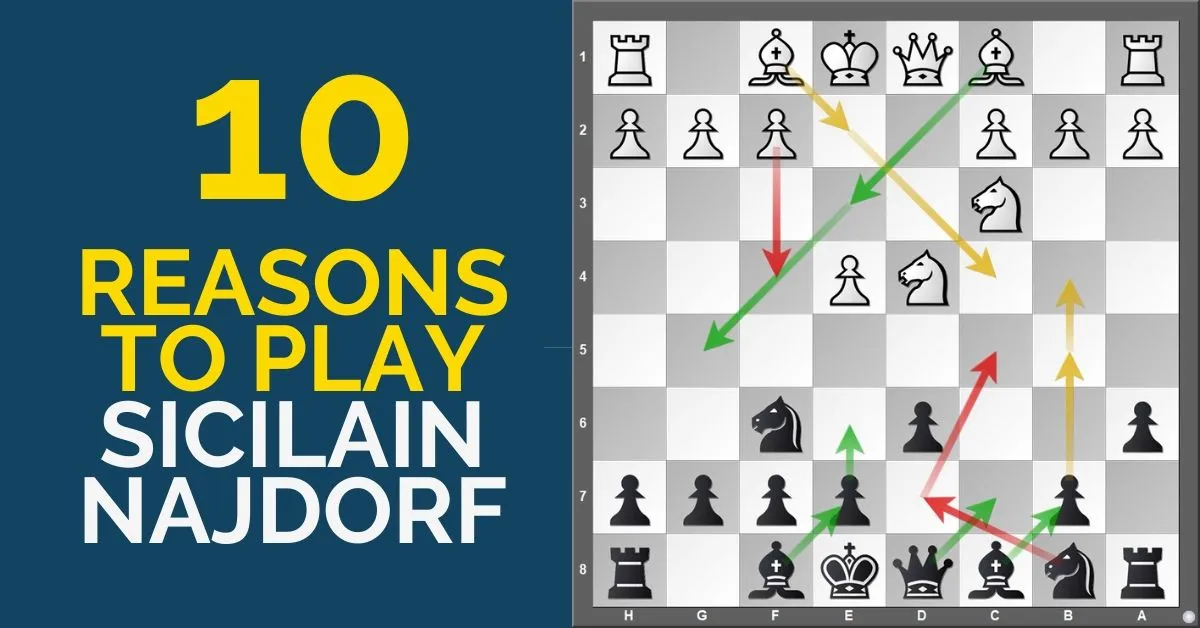
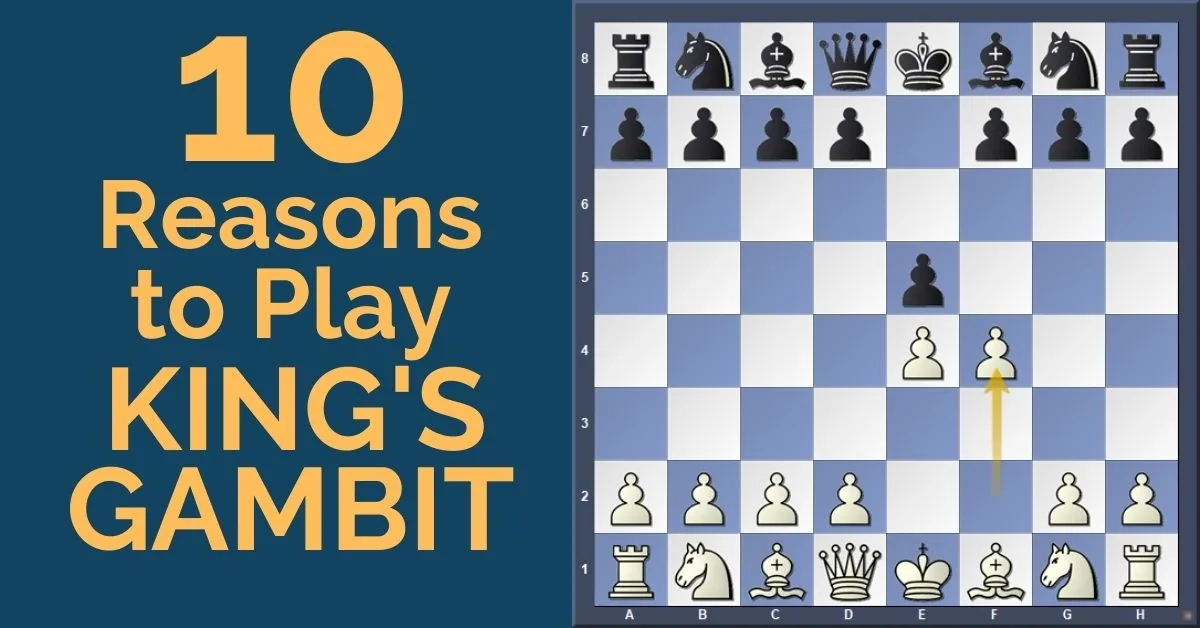




Comments: